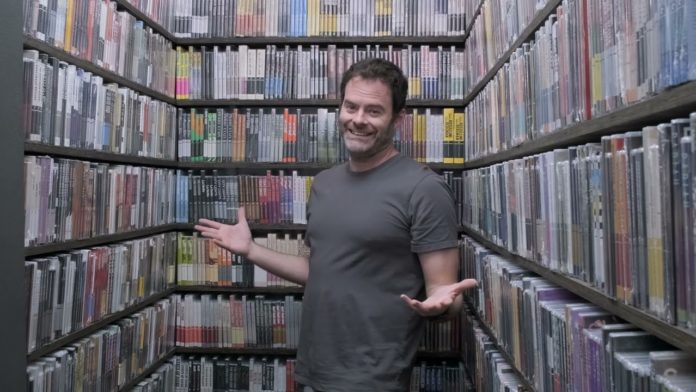The global wireless router market size is estimated to grow by USD 8.09 billion from 2024-2028, according to Technavio. The market is estimated to grow at a CAGR of over 9.24% during the forecast period. Increasing adoption of smart connected home systems is driving market growth, with a trend towards increasing use of wireless router in retail industry. However, inferior communication network infrastructure in developing regions poses a challenge. Key market players include Adtran Holdings Inc., Amped Wireless, ASUSTeK Computer Inc., Broadcom Inc., Buffalo Americas Inc., China Huaxin Post and Telecom Technologies Co. Ltd., Cisco Systems Inc., D Link Corp., DrayTek Corp., EDIMAX Technology Co. Ltd., Extreme Networks Inc., Hon Hai Precision Industry Co. Ltd., Huawei Investment & Holding Co., Ltd., Juniper Networks Inc., MERCUSYS Technologies Co. Ltd., Netgear Inc., Shenzhen Tenda Technology Co. Ltd., SIA Mikrotikls, TP Link Corp. Ltd., and Xiaomi Communications Co. Ltd..
In the retail industry, providing a cost-effective and optimal customer experience is crucial in a highly competitive market. Wireless connected solutions, including point-of-sale (POS) systems, vending machines, radio frequency identification systems, and kiosks, help retailers streamline processes and enhance the shopping experience. POS systems enable flexible payment options and improved queue management, creating a better customer experience. Retail businesses face numerous risks related to security, safety, communications, and building automation. Remote monitoring and security systems, such as machine-to-machine (M2M) security systems, play a vital role in mitigating these risks. These systems detect intrusion and shoplifting, handle fire and explosion incidents, and manage access authorizations. Retail security devices, like security alarms and mechanical security, are cost-effective solutions to protect merchandise. Technologies like electronic article surveillance are adopted to prevent shoplifting. M2M security systems, with declining installation costs and tariff rates, offer retailers real-time alerts and remote monitoring capabilities. Wireless routers are essential for the functioning of POS systems and security systems, enabling seamless information exchange among multiple devices in the retail sector. These factors contribute to the growth of the global wireless router market during the forecast period.
The Wireless Router market is experiencing significant growth due to the increasing trend of Smart City Initiatives and the need for connectivity in various infrastructure projects. With the expansion of intelligent surveillance networks, public Wi-Fi hotspots, and smart transportation systems, the demand for high-performance wireless routers is on the rise. Consumer electronics such as gaming consoles, cellphones, and streaming devices also contribute to the market’s growth. Mesh networking is a popular trend, with mesh networking systems offering improved coverage and next-generation connectivity. However, the market faces challenges such as security worries, cybersecurity risks, and technological fragmentation due to the proliferation of ransomware, malware, and unauthorized access. High-end wireless routers are in demand for both residential and business settings, but their limited coverage necessitates the use of range extenders. Broadband connectivity and internet infrastructure investments are crucial for regulatory compliance requirements, especially in rural areas where digital services are essential. The market is witnessing the emergence of 5G, but privacy concerns persist, leading to the development of privacy-enhancing features and transparent data practices. Wi-Fi standards, including Wi-Fi 4 (802.11n), Wi-Fi 5 (802.11ac), and Wi-Fi 6 (802.11ax), continue to evolve to meet the demands of consumers and businesses alike.
A network infrastructure is essential for efficient Internet communication and multimedia streaming, which involves Voice over Internet Protocol (VoIP) calls and live streaming of music and videos. However, several developing countries, including Bangladesh, Central African Republic, Nepal, and Haiti, lack the necessary Internet network and telecom infrastructure to support high-speed Internet networks. In many Asian countries, 4G technology is still in its initial stages, with Pakistan being one of the countries yet to witness significant adoption. The absence of 4G technology can hinder the growth of the wireless router market, as it is a crucial component of reliable and uninterrupted telecom services. Moreover, many rural areas in the Asia-Pacific and Middle East and Africa regions are still without 4G connections, and several developing countries lack geographically extensive telecom networks. These challenges will restrict the growth of the global wireless router market during the forecast period.
The wireless router market faces challenges in providing reliable products that support interoperable single-band, dual-band, and tri-band devices. Interference from frequency bands can affect dependable internet access, especially during simultaneous connections. Dual-band routers are popular in industries like financial services, information technology, telecommunications, retail, and healthcare for connected devices such as heart-rate monitoring equipment and patient-centric care delivery. With the rise of high-speed internet, Wi-Fi 6 standards, smart homes, and 5G infrastructure, businesses need routers that can handle bandwidth-intensive apps, smart home gadgets, and network traffic. D-Link’s AI-powered Wi-Fi router and Wi-Fi 6E routers offer solutions for high-speed connectivity, security features, and seamless integration with smart devices. Companies like D-Link are addressing these challenges to meet the demands of distant work, online learning, and 5G networks for higher bandwidths and internet penetration.
The Wireless Router Market is experiencing significant growth due to the increasing demand for reliable and high-speed internet connections. Companies are investing in advanced technologies like MU-MIMO and beamforming to enhance network performance. Additionally, the rise of IoT devices and work-from-home culture is driving the market forward. Major players include Netgear, D-Link, and TP-Link, who are continuously innovating to meet consumer needs. Overall, the Wireless Router Market is poised for continued expansion in the coming years.
The wireless router market is a dynamic and growing industry that provides high-speed internet access for private computer networks, enabling wireless-only LAN connections for various devices such as laptops, smart home devices, Smart TVs, speakers, security cameras, and more. With the increasing number of connected devices and bandwidth-intensive apps, the demand for wireless routers and wireless access points is on the rise. The wireless router industry caters to both residential and commercial sectors, offering single-band, dual-band, and tri-band options to meet diverse network traffic needs. The advent of 5G infrastructure and Wi-Fi 6 technology, including Wi-Fi 6E routers, has further boosted the market’s growth. Mobile broadband and M2M communication are also driving new opportunities in the wireless router market, particularly for home offices and other remote work environments.
The wireless router market is a dynamic and growing industry that provides high-speed internet access for both residential and business settings. Wireless routers and wireless access points enable the creation of private computer networks, allowing connected devices such as laptops, smart home devices, and IoT gadgets to access the internet. The industry caters to various sectors including financial services, information technology, telecommunications, retail, and healthcare, among others. Wi-Fi technology, with its superior performance and interoperability, is a key driver for the market. Single-band, dual-band, and tri-band wireless routers cater to different needs, with dual-band and tri-band routers offering better performance in high-density areas and simultaneous connections. The wireless router industry is witnessing significant growth due to the increasing number of connected devices, the rise of high-speed internet markets, and the adoption of Wi-Fi 6 standards. The market is also being influenced by the proliferation of 5G networks and the higher bandwidths they offer, as well as the trend towards mesh networking systems. Security features are becoming increasingly important, with consumers and businesses demanding secure and reliable products. The market is also witnessing the emergence of AI-powered Wi-Fi routers and the integration of Wi-Fi technology into smart homes and cities. The market is expected to continue growing, driven by the increasing demand for next-generation connectivity and the increasing number of bandwidth-intensive apps and smart home gadgets. However, security worries remain a concern, and manufacturers must address these concerns to ensure customer trust.












